Sustainability Spotlight: Make a Difference this Earth Week by Gardening for Wildlife
 When looking for plants to brighten up your yard this spring, consider drawing inspiration from sustainable landscaping efforts taking place in garden beds on UW-Parkside’s campus. Collaboration between UW-Parkside’s Facilities Department, the campus Land Management Committee, and local watershed partner Root-Pike WIN has helped create a long-term plan to transition flower beds from annuals to low-maintenance native perennials. These beds demonstrate sustainable landscaping practices aimed at reducing water consumption, fertilization, and the resource-intensive process of frequently replanting annuals.
When looking for plants to brighten up your yard this spring, consider drawing inspiration from sustainable landscaping efforts taking place in garden beds on UW-Parkside’s campus. Collaboration between UW-Parkside’s Facilities Department, the campus Land Management Committee, and local watershed partner Root-Pike WIN has helped create a long-term plan to transition flower beds from annuals to low-maintenance native perennials. These beds demonstrate sustainable landscaping practices aimed at reducing water consumption, fertilization, and the resource-intensive process of frequently replanting annuals.
For Parkside Day, celebrated on April 10 this year, volunteers supplemented existing flower beds with perennials native to Wisconsin. The chosen plants boast useful qualities, ranging from drought tolerance to deer resistance, and species were selected to provide colorful blooms from the onset of summer well into the fall. This spring, UW-Parkside was also awarded a grant to expand its community garden and create a pollinator patch. This will create a source of seeds to propagate on campus and supplement into flower beds in the future.
Beyond the aesthetic appeal and practical advantages, native perennials provide benefits for the ecosystem at large. By serving as vital sources of pollen and nectar, these plants foster the well-being of pollinators, including butterflies, bees, and hummingbirds. Moreover, their extensive root systems help plants withstand droughts and efficiently manage stormwater during rain events. Remarkably, these plants thrive in low-nutrient environments, eliminating the need for fertilizers.
 For those eager to incorporate native wildflowers into their own yards this year, visit Root-Pike WIN’s resource page for some recommended “top picks” and resources for buying plants. Specialized online nurseries or local gardening organizations hosting spring plant sales are common avenues for procuring plants.
For those eager to incorporate native wildflowers into their own yards this year, visit Root-Pike WIN’s resource page for some recommended “top picks” and resources for buying plants. Specialized online nurseries or local gardening organizations hosting spring plant sales are common avenues for procuring plants.
Local garden centers often stock native plants, but it's common to encounter cultivars — variants bred for specific traits diverging from their wildtype counterparts. Although cultivars may present a more manicured appearance, they might not offer the same allure to pollinators as their wildtype counterparts. Look for plant tags bearing names in quotes, indicating the presence of cultivars. Opting for wildtype species ensures a richer biodiversity and a greater influx of pollinators.
Embarking on the journey of gardening with native plants not only elevates the aesthetics of your yard but also fosters a connection with the natural world. Attracting butterflies and birds becomes a source of joy and pride for many gardeners, transforming yardwork into a gratifying endeavor. Say “yes” to the vibrant world of wildlife gardening this Earth Week and enjoy the benefits for years to come.
Keep an eye out this year for these easy-to grow plants found around Parkside’s campus:
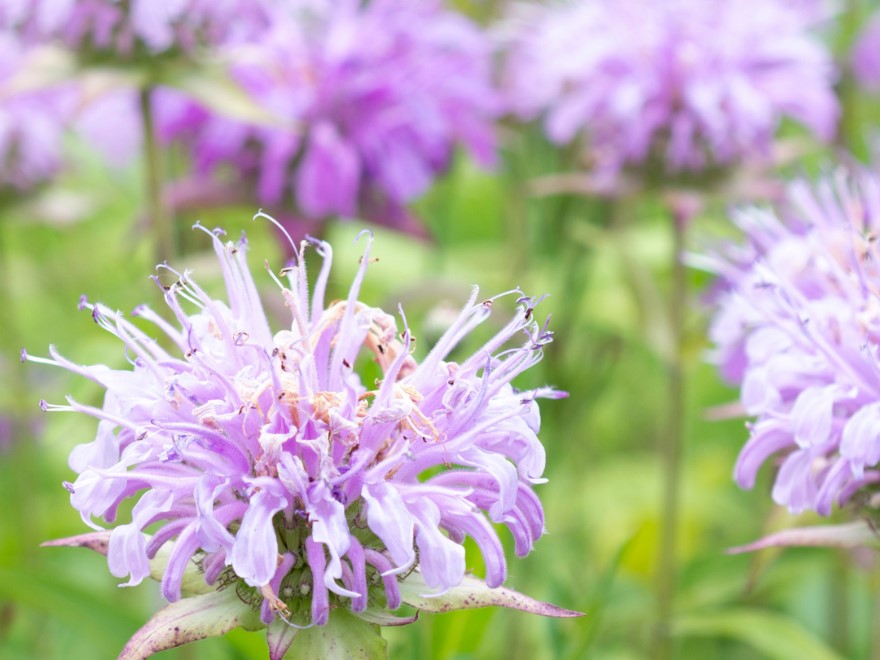
Beebalm – These species are members of the mint family (Monarda spp.) and are deer resistant, allowing them to still be found all over campus in the natural areas. As the name suggests, beebalm is attractive to pollinators. The leaves also create a fresh scent when crushed and can be used to make tea.
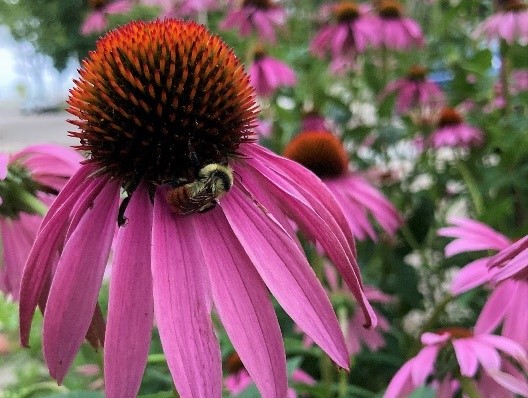
Purple Coneflower – This classic perennial (Echinacea purpurea) can produce cheerful blossoms for months with deadheading and is beloved by pollinators.
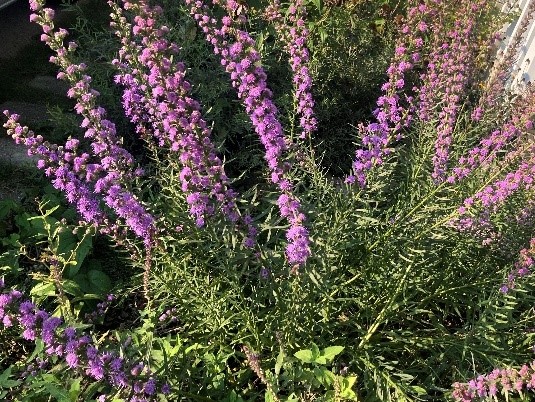
Blazingstar - There are several species that grow in southeast Wisconsin. All are attractive to pollinators but meadow blazingstar (Liatris ligulistylis) is considered a monarch magnet. Swarms of monarchs can be seen landing on these plants in the late summer as they migrate south.
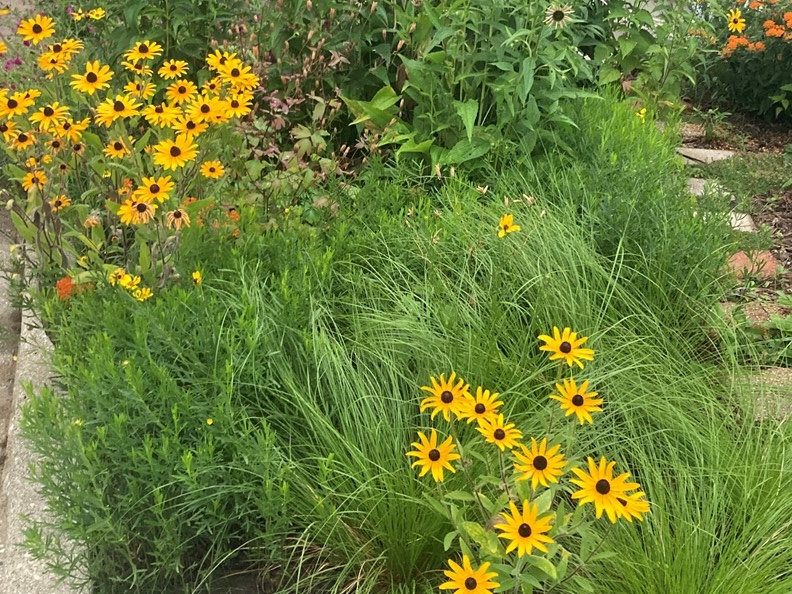
Prairie Dropseed - Not all showy plants need to be flowers. There are several native grasses that can provide structure and volume in a flowerbed to keep flowers from looking too leggy. Prairie dropseed (Sporobolus heterolepsis) provides soft waves of green, while other species like little bluestem (Schisachyrium scoparium) grow upright and turn a beautiful red color in the winter.
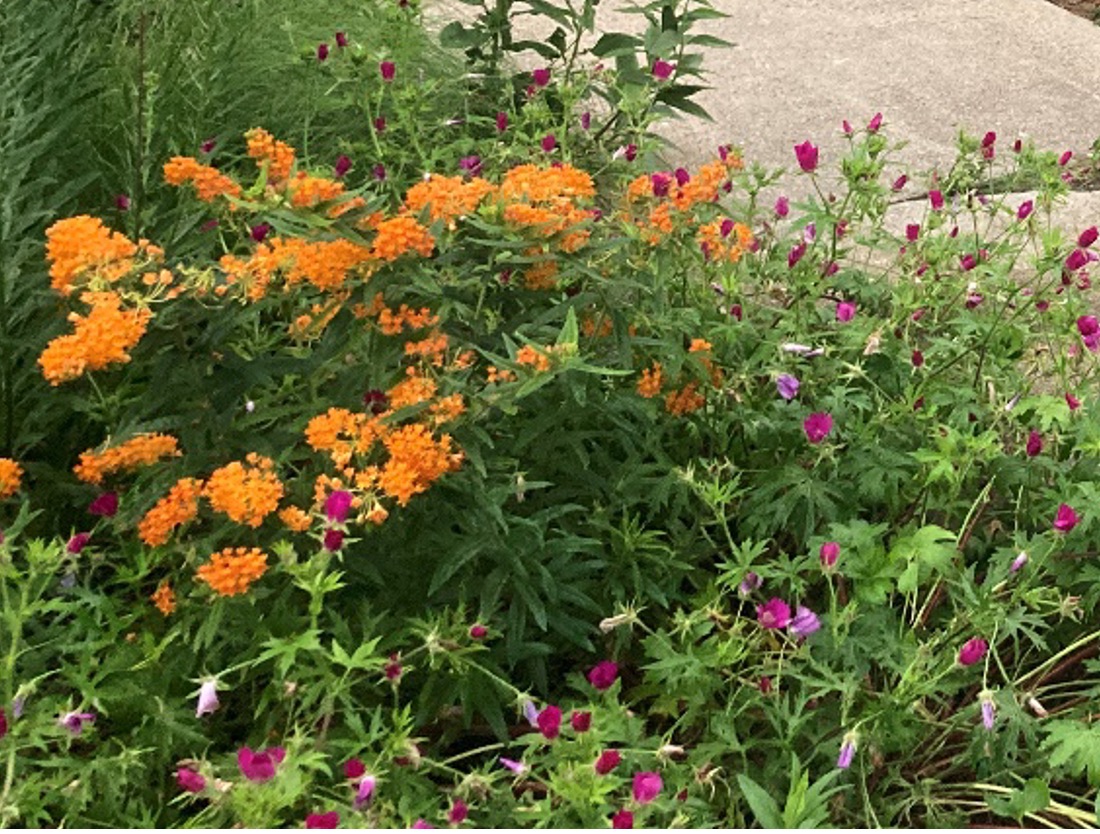
Milkweed – Species like common milkweed (Asclepias syrica) or butterflyweed (Asclepias tuberosa) are host plants to monarch butterflies.
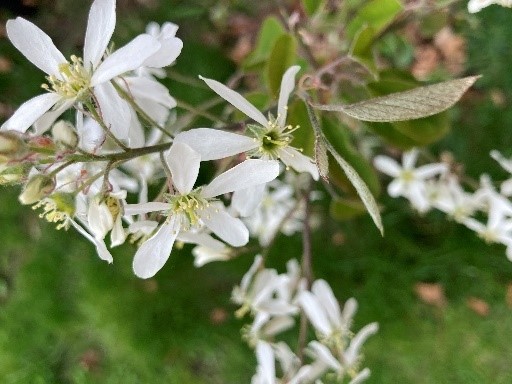
Serviceberry - This shrub (Amelanchier spp.) has delicate white blossoms in spring. As a bonus, the fruits are edible when they ripen in the summer, tasting like a blueberry. There are several species and cultivars available that can range from a spreading shrub to a small tree.